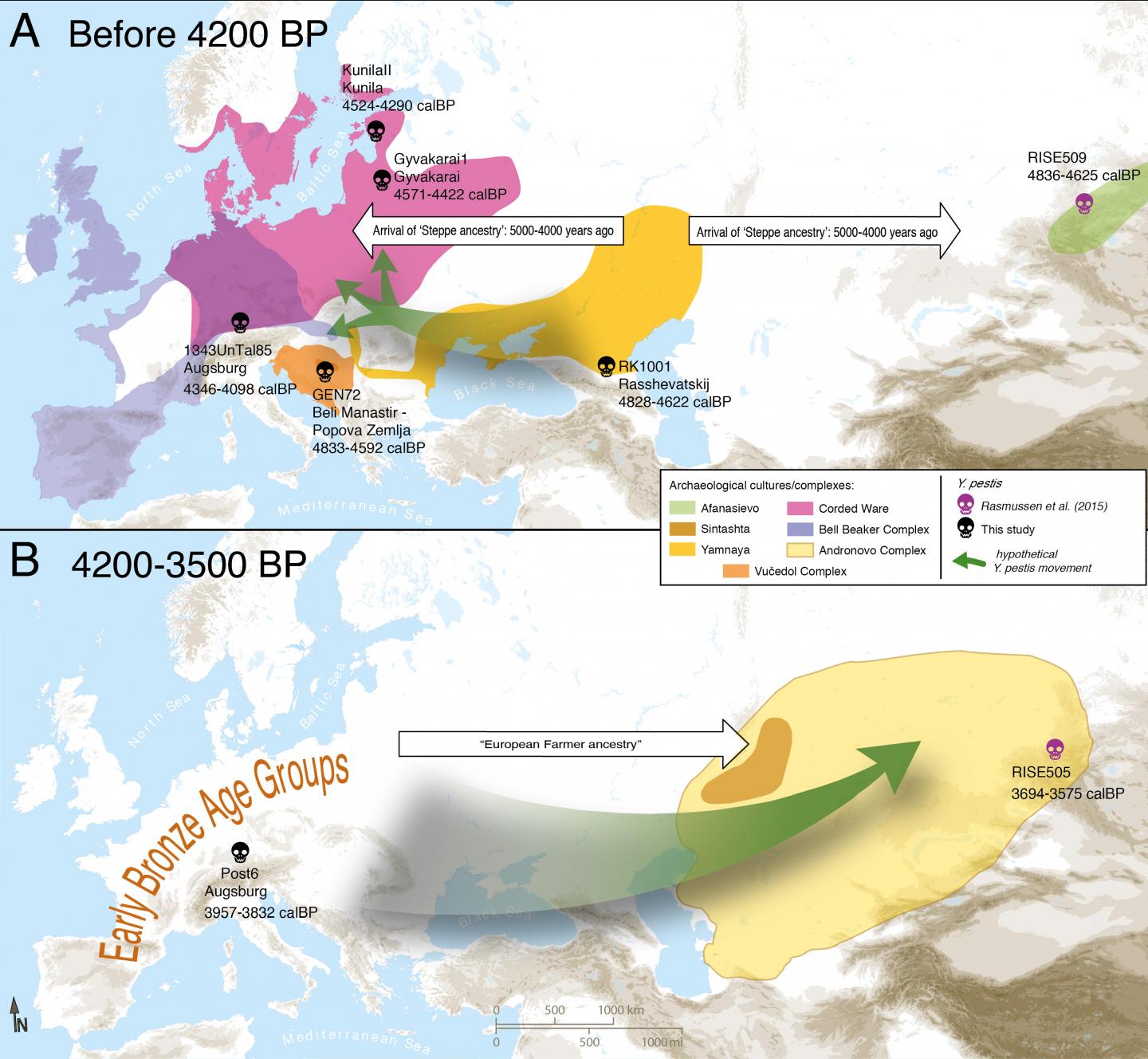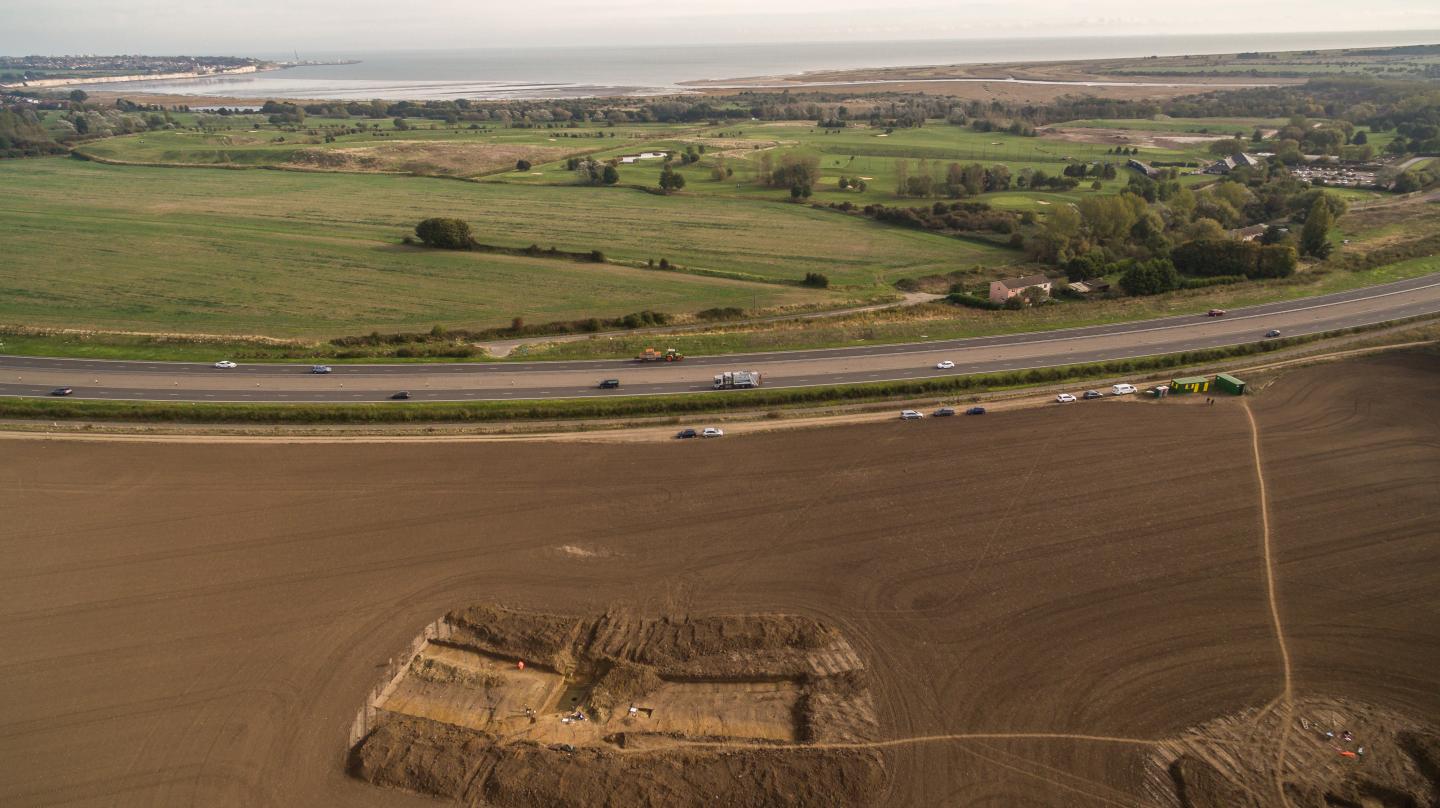Plague Came to Europe in the Stone Age The plague likely entered Europe during the Neolithic era with a large-scale migration of people from the Eurasian Steppe, according to new research from the Max Planck Institute for the Science of Human History. If correct, the new findings suggest that the plague causing Yersinia pestis bacteria arrived in Europe millennia before the first known historical epidemics. The scientists from the Max Planck Institute have sequenced the first six European genomes of Y.pestis as part of research that aims analyse ancient forms of the disease in a bid to understand its evolution. Over 500 tooth and bone samples from Germany, Russia, Hungary, Croatia, Lithuania, Estonia and Latvia were screened for Y.pestis in the latest study. Six full Y.pestis genomes were recovered from the remains. It’s been deduced that the plague likely entered central Europe at the same time as nomads from the Caspian-Pontic Steppe around 4,800 years ago. Significantly, the Y.pestis genomes from this period were all closely related despite having been found at different sites across the continent. “This suggests that the plague either entered Europe multiple times during this period from the same reservoir, or entered once in the Stone Age and remained there,” explains Aida Andrades Valtueña of the Max Planck Institute for the Science of Human History, first author of the study. To clarify which scenario was more likely, the scientists examined their data in the context of the existing archaeological and ancient DNA evidence regarding the movement of peoples during the same period. “In our view, the human genetic ancestry and admixture, in combination with the temporal series within the Late Neolithic-Bronze Age Y. pestis lineage, support the view that Y. pestis was possibly introduced to Europe from the steppe around 4,800 years ago, where it established a local reservoir before moving back towards Central Eurasia,” explains Alexander Herbig of the Max Planck Institute for the Science of Human History, a corresponding author of the study. The study detailing the research has been published in the journal Current Biology. Origins of Gold Answered? New light has been shed on the origins of gold by an international team of researchers. One of our planet’s most intriguing mysteries, the origins of gold have puzzled scientists for centuries, with no satisfactory explanation yet developed. Published in the journal Nature Communications, the new research has established that gold came to the Earth’s surface from the mantle, the layer separating the Earth’s crust from its nucleus. The internal movements of the planet were behind the ascent and concentration of the precious metal. Evidence of the process has been found in the Deseado Massif at the Argentinean Patagonia, an area which represents the first register of gold found under the South American continent. “The minerals we extract and which support our economy are located in the crust. And, although we are experts in taking advantage of them, we still know very little about their true origin. The search for gold has motivated migrations, expeditions and even wars, but its origin is one of the main questions in the field of mineral deposits genesis,” said José María González Jiménez, a Ramón y Cajal researcher from the Department of Mineralogy and Petrology at the University of Granada. Studying xenoliths- small fragments from the earth’s mantle which have been brought to the surface through volcanic eruptions, the scientists found tiny native gold particles, whose thickness is that of a human hair and whose origin is the deep mantle. The mantle’s upper limit is located at about 17 kilometres under the oceans and 70 kilometres under the continents. The Deseado Massif is one of the largest auriferous provinces in the whole planet, with gold mines that are still being exploited. The area’s high concentration of gold has given the scientists an insight into why mineral deposits are limited to certain specific regions. “Said history dates back 200 million years, when Africa and South America were part of the same continent González Jiménez explained. “Their separation was caused, among other factors, by the ascent of a ‘mantle plume’ from the deep mantle, which broke the crust (much thiner and fragile) and caused the separation of the two continents. The ascent of said deep mantle plume generated a true chemical factory that enriched the mantle with metals, which would later generate the conditions for the creation of gold deposits. This time the process was caused by the movement of a tectonic plate under another, allowing the circulation of metal-rich fluids through the cracks, which precipitated the metals and concentrated them near the surface”. The international team of researchers behind the study includes scientists from Chile, Australia and France. Featured Image: Map of proposed Yersinia pestis circulation throughout Eurasia. A) Entrance of Y. pestis into Europe from Central Eurasia with the expansion of Yamnaya pastoralists around 4,800 years ago. B) Circulation of Y. pestis to Southern Siberia from Europe. Only complete genomes are shown. Credit: Aida Andrades Valtueña. Andrades Valtueña et al. (2017). The Stone Age Plague and its Persistence in Eurasia. Current Biology. ]]>







